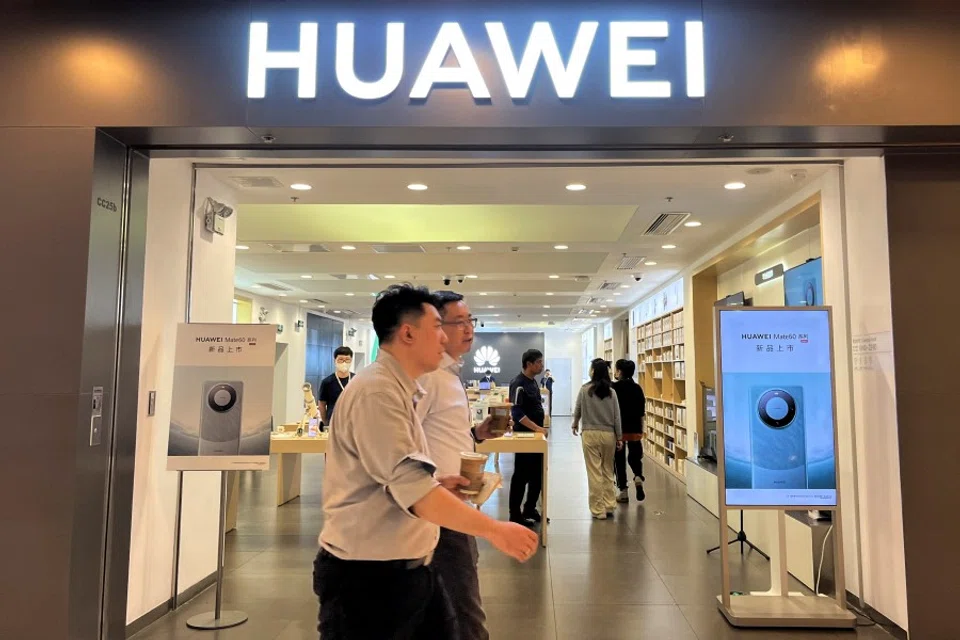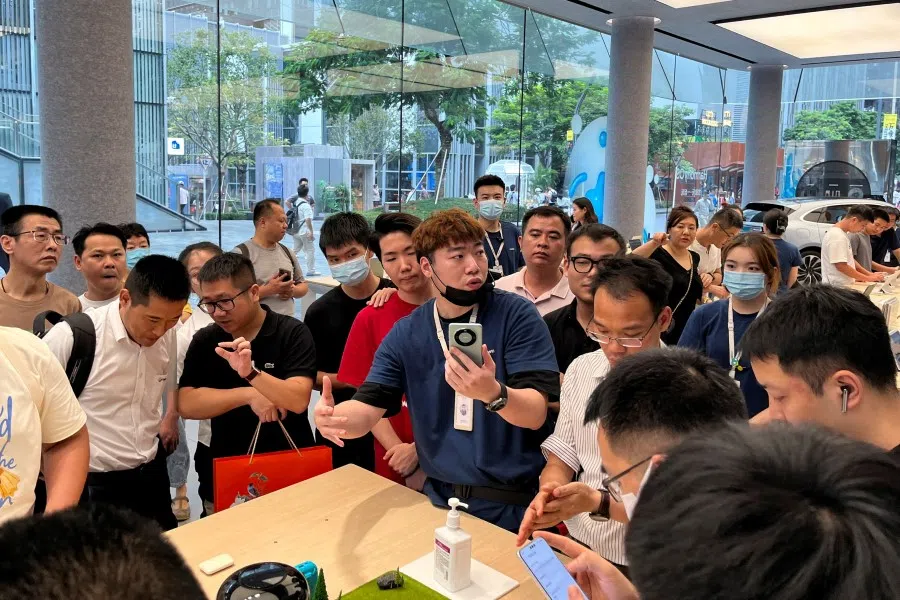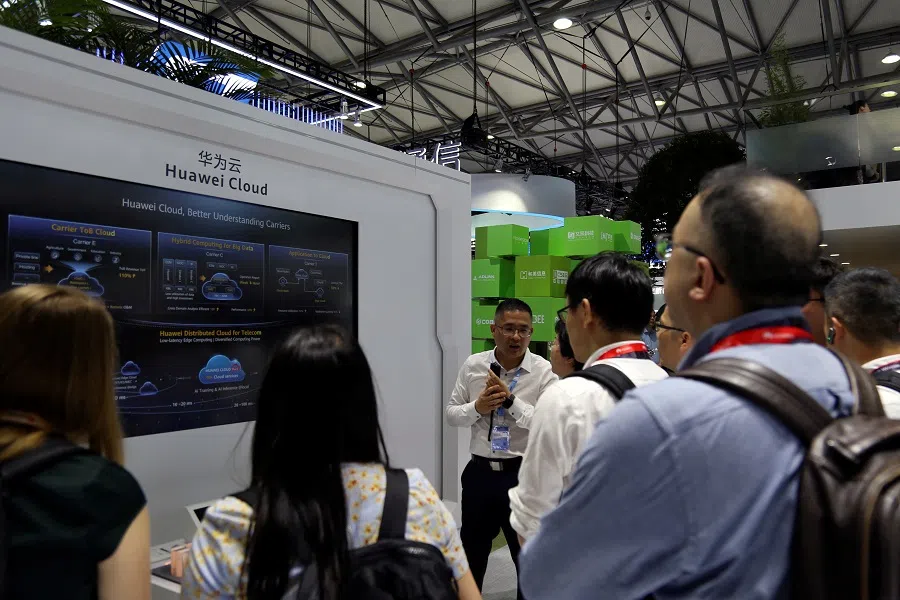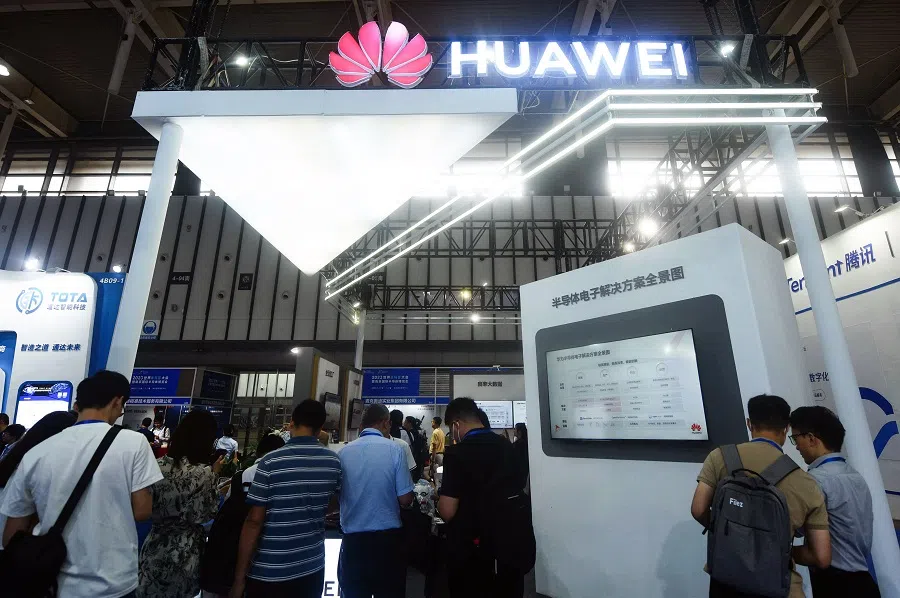Is China emerging from the chip chokehold with Huawei's Mate 60 Pro smartphone?
Amid the China-US tech war, US sanctions dealt a great blow to Huawei's growth and development. However, the company's launch of a new, apparently 5G, phone was announced during US Commerce Secretary Gina Raimondo's visit to China. Is it sending a message to the US that China's technological development cannot be stopped? Lianhe Zaobao associate editor Han Yong Hong gives her take on the issue.

On 29 August, as US Commerce Secretary Gina Raimondo's four-day visit to China neared its finale, Chinese tech giant Huawei made an uncharacteristically low-key announcement of the launch of the Mate 60 Pro smartphone.
That same afternoon, Raimondo met with Chinese Premier Li Qiang at the Great Hall of the People in Beijing. She later told the media that Li had asked the US to loosen its technology export restrictions on China, which she rejected.
Emerging from chip chokehold
However, Huawei's actions seem to signal that China's technological development is unstoppable. Even without any prior marketing or teasing, the first batch of Mate 60 Pro phones sold out in less than an hour, a first for Huawei. Notably, many well-known tech bloggers found that the new phone easily exceeded speeds of 300Mbps, with peak speeds even surpassing 800Mbps, meeting the standards for 5G network speed.
So, is the Mate 60 Pro a 5G phone equipped with a 5G chip? There was an explosion of discussion online, and public opinion was abuzz overnight.
Huawei played it mysterious, with some Chinese media describing it as "filled with smoke bombs". Huawei's official website did not mention if the new phone is 4G or 5G, and the status bar in the upper right corner of the phone does not show "4G" or "5G" signals. The phone model is also listed as carrying the Kirin 9000s chip for its processor.
It marks that Huawei, which has been heavily sanctioned by the US amid the China-US tech war, has successfully broken through its encirclement.

But looking at its speed, tech experts in China and the West have assessed it as a phone with 5G speed and the world's first mainstream smartphone to support satellite calls for users in areas without network signals.
For Huawei, Chinese tech companies and many patriotic Chinese citizens, the release of this new device is of enormous significance. It marks that Huawei, which has been heavily sanctioned by the US amid the China-US tech war, has successfully broken through its encirclement.
As the initial and most prominent target of US sanctions, Huawei's three-year absence from the 5G smartphone market is ending. It has taken over three years for China to produce chips for 5G communication, and there seems to be a glimmer of hope for China emerging from the chokehold of American technology.
Huawei's half-year report released this week also showed a 218% increase in net profit over the past six months, indicating that the toughest times may be behind them, while stock prices for Chinese semiconductor companies in mainland China and Hong Kong also rose.
Where is the chip from?
The fact that Huawei chose to release the new phone during Raimondo's visit to China carries a clear message of not backing down before the US. It is even a snub against the US Department of Commerce, which issued the technology restrictions on China through its Bureau of Industry and Security (BIS).

While Huawei did not directly acknowledge it, it made sure that Raimondo witnessed Huawei breaking through the American blockade. The overlap in timing is probably no coincidence, and this strong posture feels very "Huawei".
... Huawei could either be dipping in its inventory from 2020, or that the chips were manufactured by SMIC or even Huawei itself.
Meanwhile, Raimondo did not speak publicly about Huawei last week, appearing at ease and not too bothered by it. In response, Chinese state media Global Times wrote a commentary reminding Raimondo to "accurately understand" Huawei's presales and asserting that the US's extreme suppression "has proven to be a failure".
However, while the US may appear calm, it must have caught on to Huawei's show of strength. The BIS would probably have earlier launched investigations to determine if Huawei had bypassed sanctions and secretly obtained US technologies.
Since 15 September 2020, Huawei has been unable to produce Kirin chips with TSMC due to the former's inclusion in the US's Entity List, which essentially blocked its access to off-the-shelf chips. Industry practitioners are now speculating how Huawei was able to get the Kirin 9000s chipsets, surmising that Huawei could either be dipping in its inventory from 2020, or that the chips were manufactured by SMIC or even Huawei itself.

An American semiconductor association recently warned that Huawei was building several secret semiconductor fabrication plants across China to sidestep US sanctions and had received US$30 billion in state support.
At the same time, some Chinese experts dismantled the phone and found that the Mate 60 Pro's central processing unit was marked with the serial number "2035-CN", meaning that the chips were produced in China (CN). They speculated that the Kirin 9000s was made with the 7-nanometre process. However, none of these claims have been verified.
... if Huawei keeps glossing over the Mate 60 Pro's specifications, and consumers come to realise that the phone is not as powerful as rumoured, it could hurt Huawei's reputation in the long run.
Not out of the woods
Some questions will be answered when Huawei officially launches the Mate 60 Pro. However, it is unlikely that Huawei obtained the chips through illegal means, or it would not have dared to release the new phone during Raimondo's visit to China.

If the Huawei Mate 60 Pro does make it to mass production, it will be a big win for China's semiconductor industry. Amid China's grim economic situation, Chinese society is in desperate need of such uplifting news.
On the flip side, if Huawei keeps glossing over the Mate 60 Pro's specifications, and consumers come to realise that the phone is not as powerful as rumoured, it could hurt Huawei's reputation in the long run. Indeed, it is still too early to say that Huawei is out of the woods.
The China-US tech war will not be put on hold but will only enter a new phase. Amid intensifying China-US rivalry, competition between both sides, whether overt or covert, will go on for a long time. Huawei has become an inspiration as it managed to avoid getting crushed despite being hard-pressed. But hopefully, it is not just an exception for Chinese enterprises.
This article was first published in Lianhe Zaobao as "华为逆袭成功对雷蒙多示威".
Related: Micron ban: Will there be a winner in the China-US chip war? | Slowly but surely: China partnering Brazil to weaken US dollar hegemony? | Can Chinese patriotism sustain Huawei through tough times? | US sanctions forcing Chinese firms to switch to made-in-China tech | Huawei founder: Global economic outlook will be grim for next few years

![[Big read] Paying for pleasure: Chinese women indulge in handsome male hosts](https://cassette.sphdigital.com.sg/image/thinkchina/c2cf352c4d2ed7e9531e3525a2bd965a52dc4e85ccc026bc16515baab02389ab)

![[Big read] How UOB’s Wee Ee Cheong masters the long game](https://cassette.sphdigital.com.sg/image/thinkchina/1da0b19a41e4358790304b9f3e83f9596de84096a490ca05b36f58134ae9e8f1)

